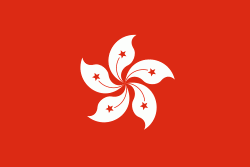Sai Kung District (Sai Kung District)
 |
The modern geopolitical entity of Sai Kung District was formed after World War II. Settlements existed in the area prior to the signing of the Convention for the Extension of Hong Kong Territory, which ceded the area to the colony of Hong Kong from the Qing Empire in 1898. Those ceded areas are now collectively known as the New Territories and New Kowloon.
According to Professor David Faure (historian), unlike other villages of the New Territories, villages in Sai Kung did not form any yeuk, a kind of inter-village alliances in the 19th century in the Qing dynasty.
Under the colonial rule, villages in Sai Kung were grouped under Tung Yeuk (also known as Tung Hoi Yeuk; ) in 1898.
Soon after, the district office of New Territories was established. The New Territories was divided into Northern and Southern District (both not the same as the modern day districts of HK) and New Kowloon in the 1920s. The area around the modern day Sai Kung Town was under the District Office North until 1947, which the area was under the administration of the Southern District (not the same as modern day Southern District) from 1947. The Southern District was under further reform since 1957.
After the end of World War II (the author did not state the exact year, however), the New Territories was divided into 8 sub-divisions, one of which was named after Sai Kung. Such sub-divisions was soon abolished. The North and South District Office were merged to form New Territories Administration, a department of the executive branch of the government, in 1948–1952, which has 3 sub-divisions: Tai Po (covers some of the area of the former Northern District), Yuen Long and Southern District. Sai Kung was under the aforementioned Southern District. Tsuen Wan District Officer was established in 1959 and craved out from the Southern District. The Southern District at that time only administrated the modern-day Sai Kung District and Islands District. A branch office of the Southern District was also established in Mui Wo in 1957, which now belongs to Lantau Island of the Islands District. It was reported that circa the early 1960s, the Southern District was further split into Sai Kung District and Islands District, but merged back in 1963.
By 1969, the New Territories Administration had 7 district offices, of which one was named after Sai Kung.
In 1977, the Hong Kong Governor announced to establish District Advisory Boards to invite locals to become advisors. Although Sai Kung locals, as well as other rural villages of the New Territories, already established their chambers and voting representatives to Heung Yee Kuk, an advisory body to the colonial government, as early as the 1930s.
The Sai Kung District and its District Council (at that time known as District Board) were formally formed in 1982. (Established in 1981, first election in 1982) A year before, the New Territories Administration was merged with its Kowloon and Hong Kong Island counterpart, the Home Affairs Department to form the City and New Territories Administration (it was renamed the Home Affairs Department again in 1993), although the Administration had transferred some functions to the Lands Department in 1982. Since 1985, the district officers of the Hong Kong Districts no longer chaired their respective districts councils. In a larger scale of history, due to the signing of the Sino-British Joint Declaration in 1984, which would hand over the whole colony to the People's Republic of China, the colonial government had made several political reforms on local politics.
A water route from the northern Sai Kung Peninsula to Tai Po existed at least since the Qing dynasty. For this historical and other reasons, the northern portion of the Sai Kung Peninsula belongs to the Tai Po District, but not part of Sai Kung District.
Map - Sai Kung District (Sai Kung District)
Map
Country - Hk
 |
 |
Hong Kong was established as a colony of the British Empire after the Qing Empire ceded Hong Kong Island from Xin'an County at the end of the First Opium War in 1841 then again in 1842. The colony expanded to the Kowloon Peninsula in 1860 after the Second Opium War and was further extended when Britain obtained a 99-year lease of the New Territories in 1898. British Hong Kong was occupied by Imperial Japan from 1941 to 1945 during World War II; British administration resumed after the surrender of Japan. The whole territory was transferred to China in 1997. As one of China's two special administrative regions (the other being Macau), Hong Kong maintains separate governing and economic systems from that of mainland China under the principle of "one country, two systems".
Currency / Language
| ISO | Currency | Symbol | Significant figures |
|---|---|---|---|
| HKD | Hong Kong dollar | $ | 2 |
| ISO | Language |
|---|---|
| ZH | Chinese language |
| EN | English language |















